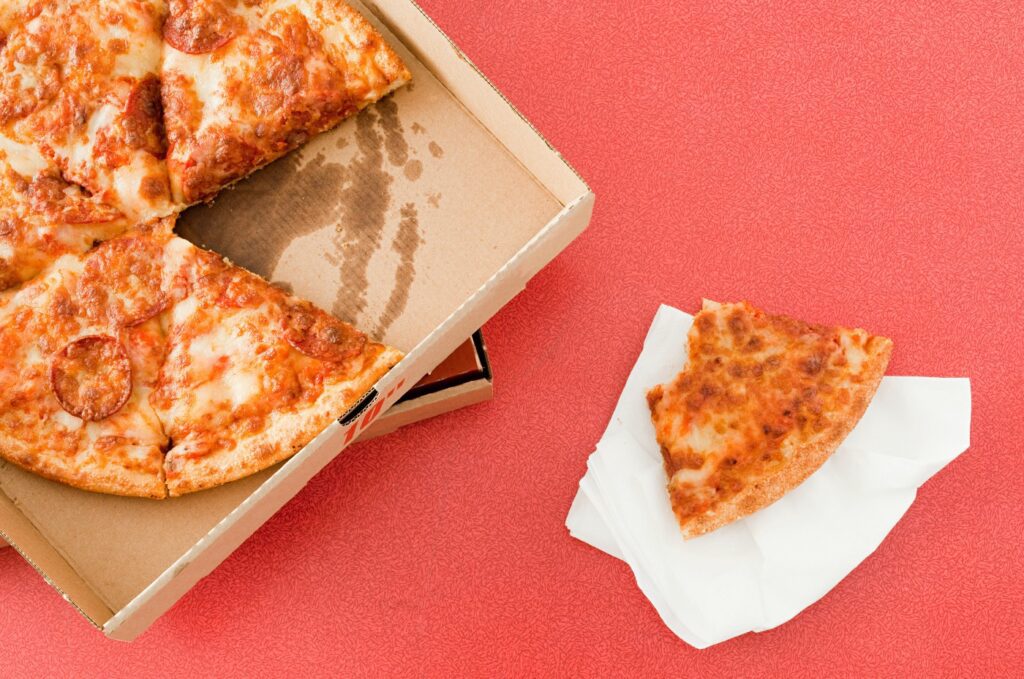Pizza is a very popular food and a favorite snack for many all over the world. The Italian meal is regularly eaten by people all over the world. Like there is one time a friend of mine said she can take pizza for breakfast, launch, and dinner. And she is not the only person that has actually said that to me.
People can’t get enough of the mouthwatering, savory, and tasty pizza, because of the unending love pizza, many people have started preparing pizza in the comfort of their homes.
Why buy pizza! when you can make it in the comfort of your home? There are lots of recipes for pizza out there, but whatever recipe you choose, if you have the correct recipe, you would have a nice pizza.
Although many people have wondered what really makes pizza so greasy, we would be showing you in this article what actually makes pizza greasy.
What Makes Pizza Greasy
Pizza gets greasy when toppings, cheese, dough, and sauce which contain a high level of fat within them are heated with an oven or hot plate and it produces oil and fat which is been saturated on the surface of the pizza.
So, therefore, what are these factors that make a pizza greasy;
1. The Cheese

There is no pizza without the addition of cheese. Cheese is a very essential ingredient in the making of pizza.
Therefore, you have to get good cheese when procuring your ingredients, if not your pizza would be affected, such as being greasy.
Cheese that is not made with whole milk tends to be fattier, thereby producing more oil when heated which in turn makes pizza dough greasy.
You need a cheese that has good elasticity(it should be stretchy, low moisture, and low fat that is good for reliability.
2. The Dough
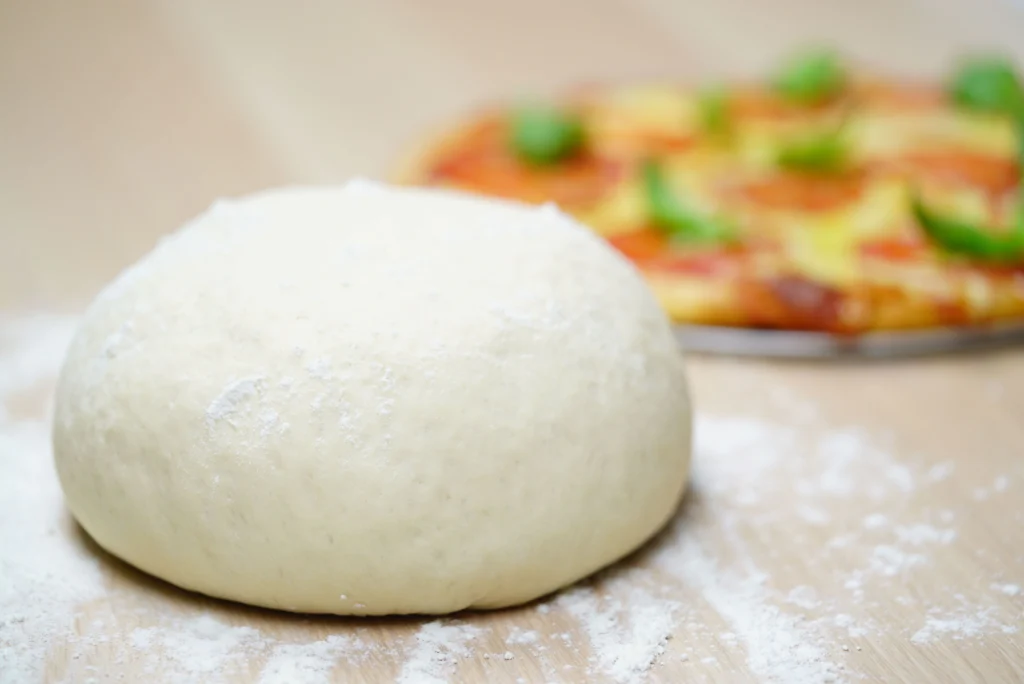
A dough is a base or foundation for making a pizza. It is actually the thing that holds everything(sauce, cheese, topping, etc.) together.
If the foundation of something is faulty, no matter how good the other stuff you put on it is, it won’t give a good outcome.
The pizza dough is actually made of flour. Your pizza can be greasy through your dough for the following reasons;
- Wet dough.
- Dough that wasn’t kneaded properly.
- Long overstay in the oven after adding toppings.
- Type of flour.
Wet Dough
Wet dough is one of the major factors of bad dough. The more moisture in a dough, the more it tends to be greasy.
Many people just pour a particular quantity of water they assume would be ok to knead the dough once, and this is wrong.
When making pizza dough, you need to add the water one at a time till you get the right consistency, this would prevent more moisture in your dough mixture, thereby preventing too much grease on the pizza.
To make good dough with the right consistency, check our free recipes page on how to make pizza dough.
Read More:
- 15 Most Popular American Breakfast
- 15 Popular Nigerian Breakfast Option
- Healthy Options For Snacks
- How To Make Pancake At Home
Dough That Wasn’t Kneaded Properly
In making pizza dough, is ideal to knead it by hand because it helps in regulating and circulating the ingredients, gives it the right texture and consistency, and also builds a molecular structure.
A well-kneaded dough is when the dry and wet substances combine together properly. A dough that is not kneaded well would always be greasy because when the flour and water are not mixed thoroughly, some parts of the dough would be dried while some parts would be wet with moisture, this is what makes your pizza greasy.
Note: when kneading, you should also be stretching the dough to allow better texture, and also you should be able to knead your dough at about 10-20mins depending on the size of your dough.
Long Overstay In The Oven After Adding Toppings
Another reason your pizza would be greasy through your dough is that you let it stay long in the oven after adding your toppings.
Your pizza would be greasy when
- leaving your dough outside the oven after you have added your toppings: After adding your toppings, you should put the pizza dough inside the oven immediately. If you leave it outside for some time before putting it inside the oven, your toppings and sauce would make the mushy.
- overstay inside the oven: Make sure your dough does not stay more than 10-12mins in the oven after adding your toppings, this tends to make it soggy and squishy thereby making the pizza greasy.
Type of flour
The type of flour is very essential when you are making pizza dough because different types of flour absorb different amounts of water.
Well, this factor is preferential in this that most prefer a soft and stretchy pizza while others prefer a more solid and crispy pizza.
If you prefer a soft and elastic pizza, then I would advise going for bread flour because it has more protein thereby absorbing more moisture and giving you that soft and stretchy pizza.
If you are in the group of solid and crispy, then I would advise you to go for the all-purpose flour that is low in protein and thereby absorbs less moisture.
Or if you are in a group of just being in the middle, you don’t want a too soft or too solid pizza, you can attempt mixing the two flours.
Note: If you have a dough that is too moist, you would end up having a greasy pizza.
3. Excess Oil
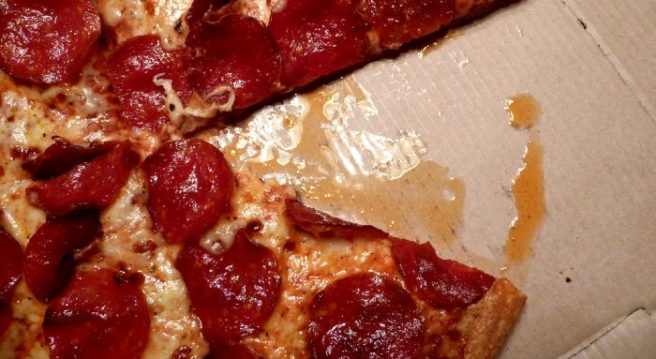
Excess oil mostly comes from our toppings. Making pizza with excess oil in it would always produce a greasy pizza.
The sauce produces oil, added to the cheese and the oil is put on the dough. All these ingredients have their own amount of oil introduced to the pizza, and this makes the pizza so greasy.
4. Thickness Of Crust
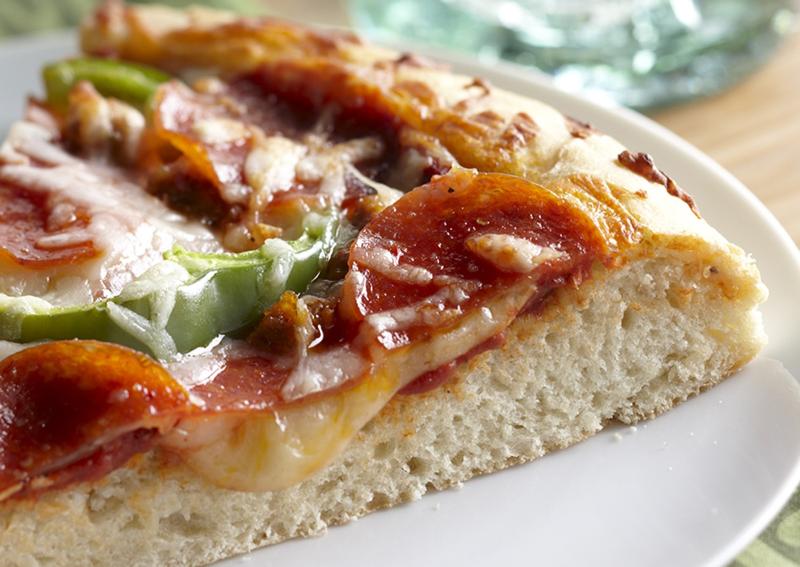
Personally, the crust of a pizza is my favorite, and I don’t know why. Toppings on a thinner pizza crust tend to cook faster than on a thicker crust, allowing the topping to melt faster thereby making the pizza greasy.
Read Also: Best Krispy Kreme donuts
5. Toppings
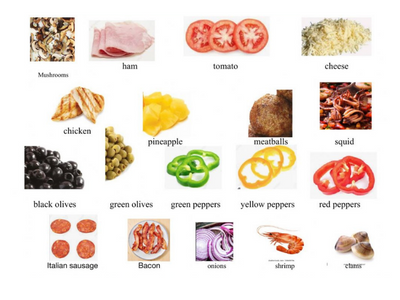
Pizza toppings are mostly what produce oil while making pizza thereby making your pizza greasy.
Although toppings vary because of individual preferences, the type of toppings you use and their quantity greatly affect your pizza’s output.
From the cheese to the sauce toppings, all of them have their own amount of fat and oil they add to the pizza.
You should be careful also in adding the right amount of toppings to the dough, that’s why you should get the right recipe for making a pizza.
6. The Baking Method
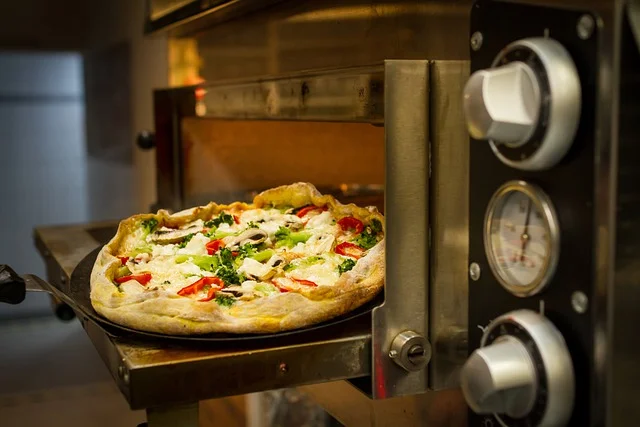
This is the last method but one of the most important processes in making a pizza.
To bake or cook a pizza not get greasy, you need a good oven or cooker that retains heat accurately.
You also need to know what the appropriate hotness of the oven should be. To bake a good pizza you need about 450-500F which is 250-300 degree Celsius.
Read Also: Is There A Difference Between Candy Thermometer And Meat Thermometer?
Conclusion
In order to make a pizza less greasy, you should endeavor to do the following;
- Get good recipes: Before you start making pizza, try to get good recipes because many people have used bad recipes that ended up giving them bad results. We have a pizza recipe page here that shows you detailed step by step on how to make a pizza.
- Have a thicker crust: Having a thicker crust can help you have lesser grease in your pizza. A thick crust takes a lot of time to get cooked, this would make the toppings not get overcooked making the pizza greasy. Having a thicker crust helps in absorbing the grease.
- Bake at high temperature: Baking at a high temperature reduces the chance of a pizza getting greased. It reduces the time for the oil from the cheese to melt, and for oil from the meat and sauce to distribute.
- Get a cheese with low fat: It is advisable to use traditional cheese rather than processed cheese because they have less fat which means lesser oil content, therefore less greasy pizza. Traditional cheese such as mozzarella, low-fat cheddar, provolone, white cheese, etc. is good options if you are going for cheese with lower fat and oil.



